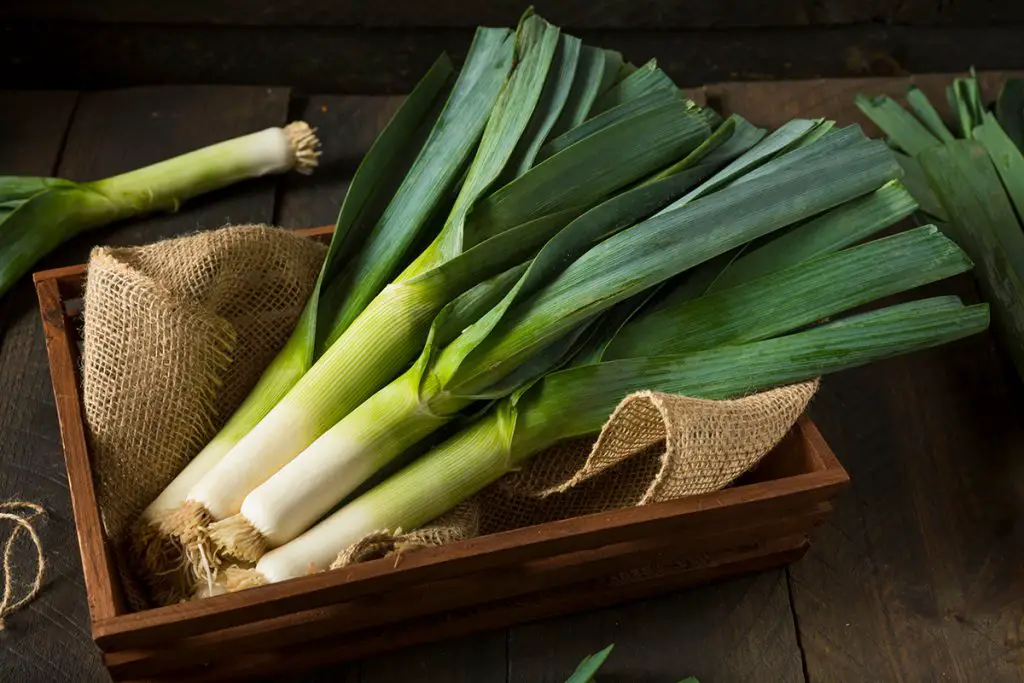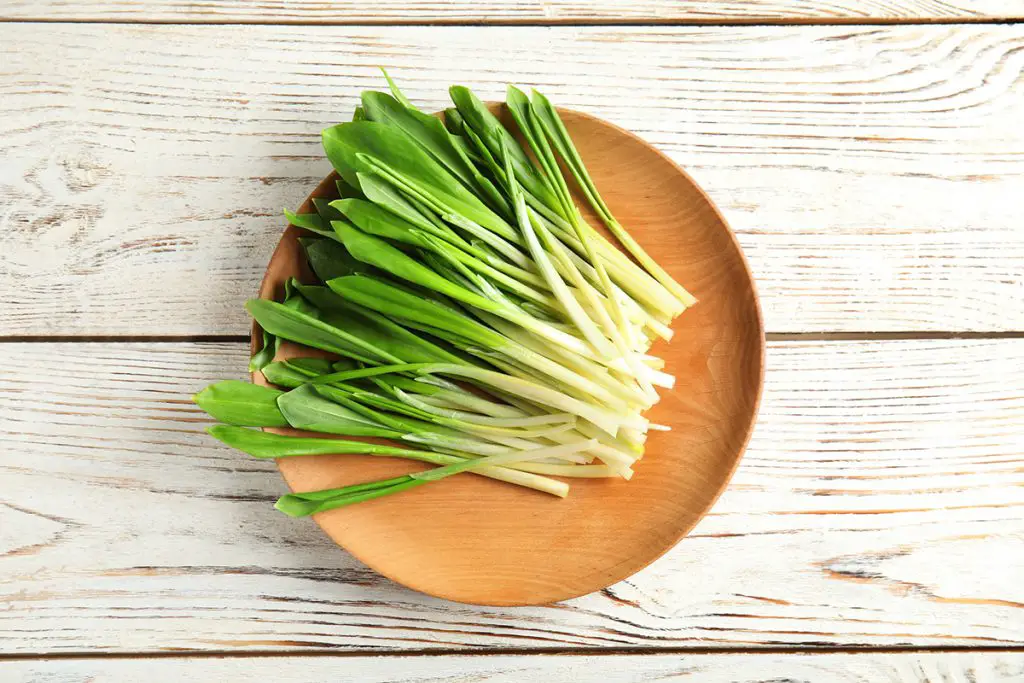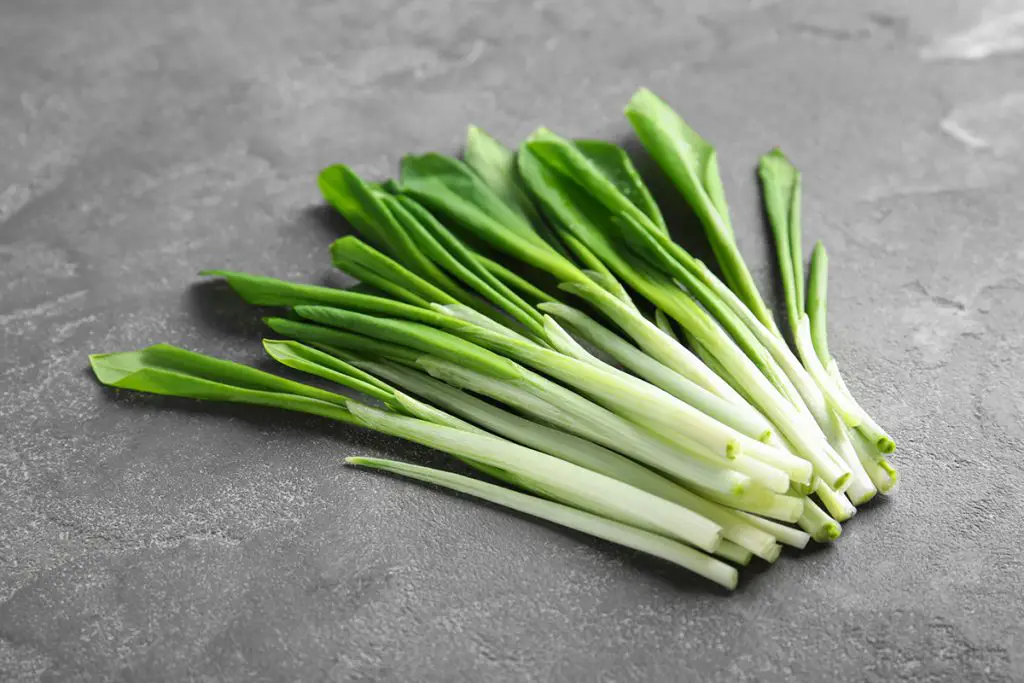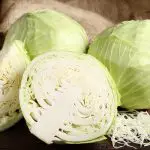3 Simple Steps to Freeze Leeks (The Ultimate Guide)
In an effort to not waste food, I have been learning how to freeze all sorts of fruits and vegetables. Not only do I waste less food, but now I always have one of my favorite ingredients on hand, which happens to be leeks.
You can freeze leeks very easily. You need to clean, blanch, and flash freeze them before storing them, which will keep them as delicious as the fresh ones. Freezing leeks is not hard, it just takes a little bit of time and some basic kitchen tools.
If you, like me, are ready to leave onions in the past and step up your game with leeks, then freezing them is going to be a total game-changer. In this article, I will give you my tried and true method of freezing leeks, how best to use them, and my personal favorite way of using frozen leeks.
How To Freeze Leeks Like a Professional (3 Steps)
There are a few different ways you could go about freezing your fresh leeks, but not all methods will yield equal results.

The following method is used by professional chefs when they need to preserve leeks for a dish at a later date. Following this tried and true method will keep your frozen leeks as flavorful as the day they went into your freezer.
Let’s take a look at the three steps for properly freezing your fresh leeks.
1. Clean the Leeks Thoroughly
If you picture a leek, you can see there are essentially three parts:
- Bulb
- Stalk
- Leafy green stems
Before you start cleaning, you can go ahead and trim the stems and roots from the leek.
Trim the stems at the leafy part, where the green starts to lighten, then chop off the end with the bulb, where the roots are coming out from. These parts aren’t typically used in any recipes, so go ahead and toss these into the trash or compost bin.
If you want to try and use these parts of the leek, you can save them by making homemade stock. Leeks go great in any vegetable or meat stock.
Now that you have the yummy center of your leek, it is time to get them cleaned up so they will be ready for their stay in the freezer.
Leeks have plenty of layers, ridges, and crevices that can have leftover soil, gritty bits, and pesticides from where they were initially grown. To get the leeks clean enough to eat, take each under a faucet of cool running water and use your hands to clean and remove any grime.
Once the outside is cleaned, cut your leeks down the center lengthwise. You should then be able to pull apart the layers of the leek into single, long pieces. Give these pieces another good rinse under the cool running water, checking for any missed soil or other dirt.
Depending on the recipes you plan on using your leeks for, you might want to chop them up width-wise at this point. Longer pieces might be good for something like stir fry, whereas you might want smaller pieces for soups and stews.
Gather your now squeaky clean leeks and move on to the next step, which is blanching.
2. Blanch the Leeks in Boiling Water
To blanch the leeks, or almost any other vegetable, you are going to need a big pot and a blanching basket or something comparable. I actually don’t have a proper blanching basket, but I find that my small strainer works just as well.

Fill your pot with water and put it on high heat and bring the water to a boil. Then, while waiting for the water to come to a boil, fill another large bowl with cold water. Fill the blanching basket with some of your cleaned leeks and submerge the basket into the boiling water.
Cover the pot with a lid.
Then, let the leeks hang out in the covered pot for about 30 seconds. This doesn’t need to be exact, but too long will turn your leeks into a mushy mess while too little won’t give you the benefits of blanching.
After 30 seconds in the pot, take the blanching basket with your leeks out of the boiling water and then immediately submerge them into the large bowl of cold water. Let the leeks sit in the cold water for a few minutes, so the cooking process stops completely.
When you blanch vegetables, you are not trying to cook them, so make sure that the cold water is cold enough to do this. The National Center for Home Food Preservation recommends the water is at least 60°F (15.5°C) or colder.
Once all the leeks have been blanched and cooled, it’s time to prepare them for the freezer.
Important Tip: Don’t Skip the Blanching Step
There are only two times that you can skip blanching your vegetables before freezing:
- If you will be using them within a week.
- Or if you want to be sorely disappointed later when you go to use them.
If you are hoping to create flavorful and beautiful meals with the vegetables from your freezer, blanching is not negotiable.
When you blanch a vegetable, it stops the enzymatic process that would have made your vegetables limp, dull in flavor, and an overall bland eating experience. Blanched vegetables are comparable to fresh vegetables in flavor, beautiful in color, and maintain their texture,
There are a few exceptions to the blanching rule, such as bell peppers or bulb onions. However, these are few and far between.
3. Prepare the Leeks for Your Freezer
To get the leeks ready for the freezer, you will need wax paper and a baking tray ready. Before storing them in the final container, it’s best to flash freeze them first.
To flash freeze them, lay a piece of wax paper over the baking tray and then line the leeks on the tray. It is important not to crowd them together or lay them on top of each other. If the leeks don’t have a little bit of room, they won’t freeze as well and won’t be as easy to store.
That being said, the leeks can touch a little bit without causing any issues.
Once you’ve lined the baking tray with leeks, pop them into the freezer for 30-35 minutes. After that time has elapsed, give them a check with your fingers. If the leeks are still soft, leave them in for another 5 minutes. Repeat this until the leeks feel rigid.
Now that the leeks have been flash frozen, they will stay in much nicer shape in a freezer bag or container. Additionally, they are less likely to get freezer burnt. Transfer the leeks into the container or bag of your choice, ensuring that it is freezer safe first.
You’ve put in a lot of work for these leeks, so it would be a shame to lose them now.
Jot down the date on the bag or container, and then you can finally put those leeks in the freezer for whenever your heart desires them. The leeks will be patiently and deliciously waiting for the day they are thrown straight into your saute pan.
Cooking With Frozen Leeks
The day has finally come. You’re curled up on the couch, trying to decide what you should make for dinner tonight, and it hits you — it is a perfect day for potato leek soup. Lucky for you, you have a stock of perfectly frozen leeks ready for action.
Even if you have something different in mind for dinner, using your frozen leeks is not much different from using fresh ones.

How To Defrost the Leeks
There isn’t much of a process for defrosting frozen leeks. In most cases, you will be able to just toss them right into the pan from the freezer. Since you prepared the leeks correctly, they should cook up well without a defrost period in between.
If you want to defrost them before cooking, all they need is about 45 minutes to an hour at room temperature. So, just take them out of the freezer and leave them on the counter to thaw about an hour before you prepare dinner.
Fresh Leeks are Sometimes Better
In almost every case of using cooked leeks, you can absolutely freeze them beforehand, and there will be minimal difference in the result. However, there are times you will want to use fresh leeks instead.
Leeks have a flavor very close to onions and garlic, and you can often substitute leeks for onions and vice-versa since they are so similar. Leeks can also be used raw, just like onion can.
If you are going to use your leeks as a garnish or as a raw ingredient in a salad, then frozen leeks will be noticeably out of place. These would be cases where it would be much tastier to use fresh leeks.
Bonus Method of Freezing Leeks
While the above method is the best for whenever you plan to use frozen leeks in the future, there is another very different way to freeze leeks. I am personally a huge fan of what I call the “butter method” for freezing leeks, herbs, and other strong-flavored ingredients.
First, melt a large amount of butter into a saucepan. I usually go ahead and melt three or four sticks for this.
Then, take finely chopped leeks and saute them in the butter. You aren’t necessarily trying to cook them here, but instead infusing the butter with the flavor of the leeks.
Once you have your butter liquified, pour the butter and leek mixture into an ice cube tray and then store the tray in the freezer. When cooking a dish that could use some buttery, leek flavor, just pop one of the leek-infused butter cubes into the mix.
This is how I make my scrambled eggs, and I will never go back.
Food Safety and Storage Information For Leeks
There are a few things to keep note of when you are freezing leeks or any other foods for that matter. While freezing food is very safe, there are some things that you should be sure to do before and after to keep yourself from getting sick.

Use Frozen Leeks Within One Year
When you were going over the steps for freezing leeks, you saw a small step to write down the date on the container. This is so that you can be sure to use the leeks within a year. Toss anything that does not get used before that date.
Once the year mark has come and gone, the quality will deteriorate, and your leeks will end up not tasting very good. There is also a risk of freezer burn and other contamination.
Store in Freezer Safe Bags or Containers
When storing frozen leeks, use freezer-safe containers and attempt to get all the air out of the container before they go into the freezer. Limiting the air will give your leeks a much better chance of not getting ruined with freezer burn.
Once It Thaws, Do Not Refreeze
If the leeks are taken out and thawed, or your freezer breaks for some reason and the contents thaw, then those leeks are not good to be refrozen.
When food thaws, there is a chance of bacterial growth that would normally be destroyed in the cooking process. However, if you refreeze, those bacteria might linger and cause you to get sick when you do end up using them.
Check out the video below for yet another way to prepare and freeze fresh leeks.
Final Thoughts
Leeks are such an underappreciated and underrepresented ingredient, and they deserve way more love. Get out to the grocery store or farmers’ market and stock up on some beautiful leeks.
Now that you know how to freeze them, there is no reason not to start incorporating leeks into every meal of the day!







